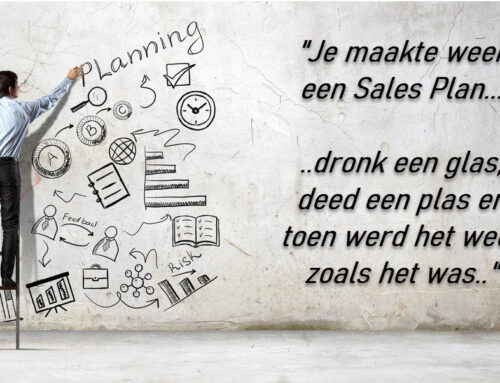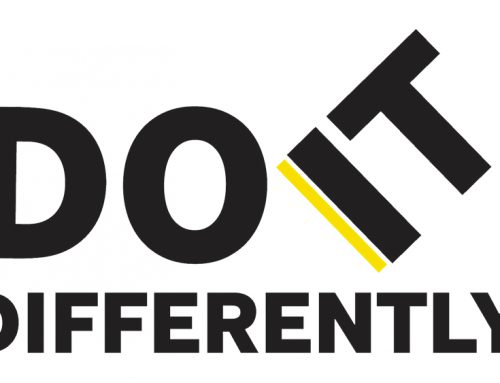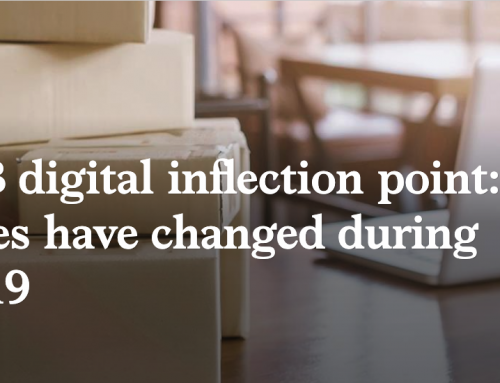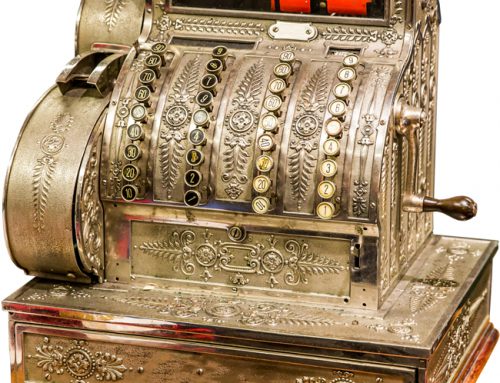The sales funnel no longer satisfies ...
The sales funnel is "old school. Stop falling behind the times. Learn why today's sales professional prefers a better model... What does this better model entail and how can you and your team get started with it quickly?
The (sales) funnel is the most underestimated, least applied and not understood sales tool of today's sales organizations. You can think of the sales funnel as a race car. If it is well designed, it has the potential to run every other car wrong. But the car is only as good as the driver and the team around it. The best Formula 1 car is no guarantee of success, and certainly not when it is misaligned.
Faulty design
Every sales professional thinks they understand what the sales funnel stands for. You stick a label on each stage of the sales process that you pull a customer through. For example: 1. qualify; 2. make presentation; 3. make offer; 4. negotiate and order phase.
Some sales professionals think they really get it and attach a probability percentage to each stage. This allows them to even forecast what will come out of the sales pipeline at any given time. In addition, they divide each phase into sub-steps for even more grip. Unfortunately, reality is more unruly. The sales funnel is poorly designed in many an organization and gives a false representation of reality. No wonder this tool is so rarely truly embedded in sales organizations.
The reason for the failure of the sales funnel within organizations lies in its design. The main mistake is, the sales funnel is based on sales activities. However, these things say nothing about where the customer is in his buying process. Sending an offer only says that at some point the salesperson asked the customer if this was allowed.
"Dear reader, you may always send me an offer. However, the question is whether I want to solve the alleged problem for which the quotation would provide a solution at this time. Chances are I would say to the salesman on his follow-up call, "I haven't gotten around to it yet." After all, I think it would be sad if I told him that, on second thought, I didn't give a shit. After all, I am also just a human being who was taught in his upbringing not to bump people's heads when I don't have to."
Ascribing a probability percentage of 70% to the funnel phase 'offer', for example, is therefore extremely subjective. Not surprisingly, sales funnel forecasts are often extremely unreliable. Stop selling, help your customers buy!
Different glasses
The customer is in control. Therefore, put on a different set of glasses. Let's rename the sales funnel the "buying funnel. Let's design the funnel from this perspective. The time-honored AIDA marketing model (Awareness, Interest, Desire and Action) once again proves to be a good guide.
- Awareness phase, client problem awareness and consequence concretization.
- Interest phase, the client explores the (alternative) solutions.
- Desire phase, the customer shows commitment by allocating people, resources, timeframe and defining the buying criteria for solving the problem.
- Action phase, selecting the solution (partner).
You should then divide each stage into sub-questions rather than sub-steps. Questions that the customer should answer and whose answers show that the customer is ready for the next step.
"What's the Problem and ditch the offer?"
It is the customer who determines what stage you are in. It is the customer and not you who determines if there is a problem. Only when you are certain that the customer is aware of a particular problem does it make sense to talk to the customer about possible solutions. When discussing possible solutions, it is obviously extremely naive if you would limit the conversation only to the solutions you can offer. If you want to influence the customer, you have every interest in also discussing alternatives that are beyond your reach. Before you go any further, you would do well to make sure that the customer wants to solve the problem.
Every organization has problems. However, every organization makes choices about which problems it accepts for now and which it wants to solve. This often depends on the impact of the problem on the business. Thereby, it may also be the case that your contact person is eager to solve the problem, simply because it gets in his way personally. The budget holder, on the other hand, looks at it very differently, so it is pure time wasting if you still make an offer in this situation.
Critical stage
The buying funnel is all about the customer's "commitment" to take the next step. The customer is in control. You are merely his guide. We don't talk about the "customer journey" for nothing these days. When the customer recognizes a problem in phase 1 and comes to the conclusion in phase 2 to start solving it as well, we enter phase 3. The customer starts allocating time, resources, money and a time frame to address the problem. Now an opportunity is really concrete and starts to count in a forecasting. Why does an opportunity only really count in phase 3 (desire phase)? Because in the previous phases, it is very questionable whether the customer wants to allocate budget for a solution. And no budget means: no deal! Any sensible VP Sales, CEO and CFO will take opportunities in the first two phases of the buying funnel with a grain of salt and certainly not make any serious predictions about them. Only when the customer decides to commit budget, resources and a timeline to a solution will things get serious.
What is your Opportunity?
What chance you have in Stage 3 (desire stage) depends on a number of factors.
- Were you the one who alerted the customer to the problem in phase 1 (awareness phase)?
- Does your solution seem attractive in terms of risk and economic impact in phase 2 (interest phase)?
- Can you think with the customer about what buying criteria they will use?
- Do you have access to everyone involved in the buying process?
- In phase 3, does the client see you as a consultant or as an outsider with no added value at this stage?
Phase 4 (action phase) is all about who gets to deliver which solution. In the classic sales funnel, the further you progress through the stages of the sales funnel, the more likely you are to convert an opportunity into an order. In the buying funnel, this is not so obvious. It makes a huge difference whether you as a supplier only enter the picture in phase 4 or earlier. Think for example of tender processes, where the customer has gone through the first 3 phases on his own without your involvement or, worse, together with a colleague. If you don't get on board until phase 4, the selection phase, your chances are very slim. You can only dance to the customer's tune. Of course, you can still try to retroactively influence the outcomes of the first three phases, but you will understand that your conculega, who was involved in the first three phases, has a serious advantage.
The new standard
The buying funnel is the new standard! A standard that is not about sales activities, but about answering questions that show whether the customer is ready for the next step in the buying process! How you or your people do this hinges on asking the right questions of the customer. But also on smartly managing all areas of focus.
~H. Ben Mastboom, helps companies as a frequent speaker, advisor,
coach and trainer how to become the preferred speaker and excel.
This is an article in the series: "What can you learn in the courses of the Sales Leadership Academy?".
Articles that have also appeared in the leading sales trade magazine of the Netherlands "Salesmanagement".
There is a master class connected to this topic:






